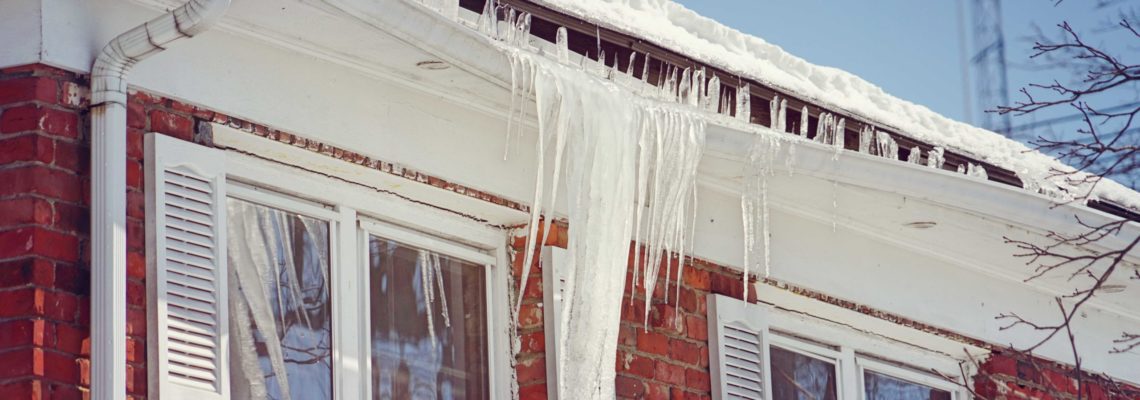Ice dams can occur in winter weather during the freeze/thaw cycle after a snowfall and can cause serious water damage to the roof, attic, gutters and other parts of your home. Knowing what causes them, how to prevent them, and how to remove them can help prevent serious water damage to your home.
What Causes Ice Dams?
A home is designed so that any snow that accumulates on the roof should melt, go through the gutters, and flow on the ground away from the home. Unfortunately, depending on the outside temperature and the temperature in the attic, ice dams can form. This happens when the snow melts quickly due to a warm attic, but the outside temperature is cold enough that the edge of the roof freezes, and the rest of the water gets stuck on the roof, freezing and creating an ice dam along the gutters.
Remove the Snow on the Roof
Removing the snow can help prevent ice dams from forming, as the snow won’t be able to melt then freeze into ice along the gutters. Remove the first few inches of snow from the roofline with a rake or long-handled brush, so you don’t need a ladder. Clear downspouts so melted snow can drain properly. If there is a foot or more of snow, clear as much of the roof as possible to prevent damage to the roof.
Check Your Attic Insulation
Heat naturally rises, so if you don’t enough insulation in your attic, this heat can rise up and warm your attic and roof and make the snow melt. Not only does this create problems with ice dams, but your furnace has to work harder because heat is escaping through the roof.
Having proper insulation in the attic can help keep the attic temperatures lower, reducing the potential for an ice dam to occur. Additional insulation added to the attic can help with this.
After a snowfall, if there are any bare areas on the roof that don’t look like they’re from the sun, be sure to check the insulation underneath these spots, as they may have less insulation, which causes those parts of the roof to be warmer and melt the snow faster.
Check the weatherstripping around the attic as well, to help keep warmth from getting into the attic and melting the snow on the roof.
Check The Attic Ventilation
Heat can leak into the attic even if the insulation is done properly. The heat will build up if the ventilation is not adequate. Check the attic for existing vents and make sure they are not covered. Then, make sure there is at least one square foot of venting space per 140 feet of attic floor space. If there are no vents, or not enough vents, consider adding vents or installing a ridge vent.
Remove Ice Dams When Discovered
Keep an eye on the roof during the winter and remove any ice dams that do form as fast as possible. Smaller ice dams can often be dislodged with a roof rake. For a larger ice dam, clear a channel through it to allow standing water to drain. Rock salt shouldn’t be used on a roof, but calcium chloride can help melt ice dams to allow water to flow again.
Proper maintenance and making sure your home is properly insulated and ready for winter weather can help prevent ice dams, though they can still occur. If you have ice dams that end up causing water damage to your home, call the professionals at PuroClean Certified Restoration to do the water damage restoration job right.


